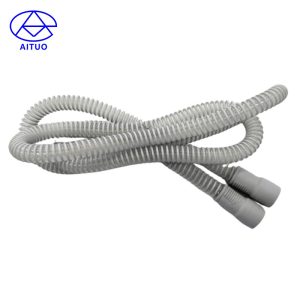Continuous Positive Airway Pressure (CPAP) therapy is widely recognized for its efficacy in treating conditions such as sleep apnea and certain types of respiratory failure. One of the key benefits of CPAP therapy is its ability to reduce the work of breathing. This reduction in the work of breathing is achieved through several physiological mechanisms:
- Maintenance of Positive End-Expiratory Pressure (PEEP):
CPAP maintains a constant positive pressure in the airways during both inhalation and exhalation. This positive end-expiratory pressure (PEEP) prevents the collapse of the alveoli, the tiny air sacs in the lungs where gas exchange occurs. By keeping these airways open, CPAP reduces the effort required to reopen them with each breath, thereby decreasing the work of breathing .
- Reduction of Airway Resistance:
CPAP helps to reduce airway resistance by splinting the airways open. In conditions like obstructive sleep apnea, the airways can collapse or become blocked during sleep, leading to interrupted breathing and increased work of breathing. CPAP prevents this collapse, ensuring a clear and stable airway through which air can flow easily. This reduction in resistance decreases the overall effort required for breathing .
- Improvement of Alveolar Surface Area:
By maintaining the alveoli open, CPAP increases the surface area available for gas exchange. Improved ventilation-perfusion (V/Q) matching ensures that oxygen is efficiently transferred into the blood and carbon dioxide is removed. Enhanced gas exchange reduces the respiratory drive, meaning the body does not have to work as hard to maintain adequate blood gas levels .
- Optimization of Respiratory Patterns:
CPAP therapy can improve the respiratory patterns in patients, especially those with chronic obstructive pulmonary disease (COPD) and other respiratory conditions. It helps in stabilizing the breathing pattern, reducing rapid and shallow breathing, which is inefficient and increases the work of breathing. With more efficient breathing patterns, the muscles involved in respiration do not have to exert as much effort, thus lowering the work of breathing .
- Decrease in Work of Breathing and Efficiency of Neural Drive:
For patients with COPD, CPAP can improve the efficiency of the neural drive to the respiratory muscles. The neural drive is the signal from the brain to the respiratory muscles to control breathing. By improving this efficiency, CPAP ensures that less neural input is required to achieve the necessary ventilation, thereby reducing the work of breathing .
- Prevention of Atelectasis:
Atelectasis refers to the collapse of part or all of a lung, which reduces the area available for gas exchange and increases the effort required to breathe. CPAP prevents atelectasis by keeping the alveoli inflated, thus maintaining optimal lung volumes and reducing the work of breathing .
- Decreased Need for Mechanical Ventilation:
By improving respiratory mechanics and reducing the work of breathing, CPAP can help prevent the need for more invasive mechanical ventilation in certain clinical settings. This not only reduces the physical burden on patients but also minimizes the risks and complications associated with mechanical ventilation .
In summary, CPAP reduces the work of breathing through a combination of maintaining positive airway pressure, reducing airway resistance, preventing alveolar collapse, optimizing respiratory patterns, improving neural drive efficiency, preventing atelectasis, and potentially reducing the need for mechanical ventilation. These mechanisms collectively enhance the efficiency of the respiratory system, decrease the energy expenditure required for breathing, and improve overall respiratory function.



